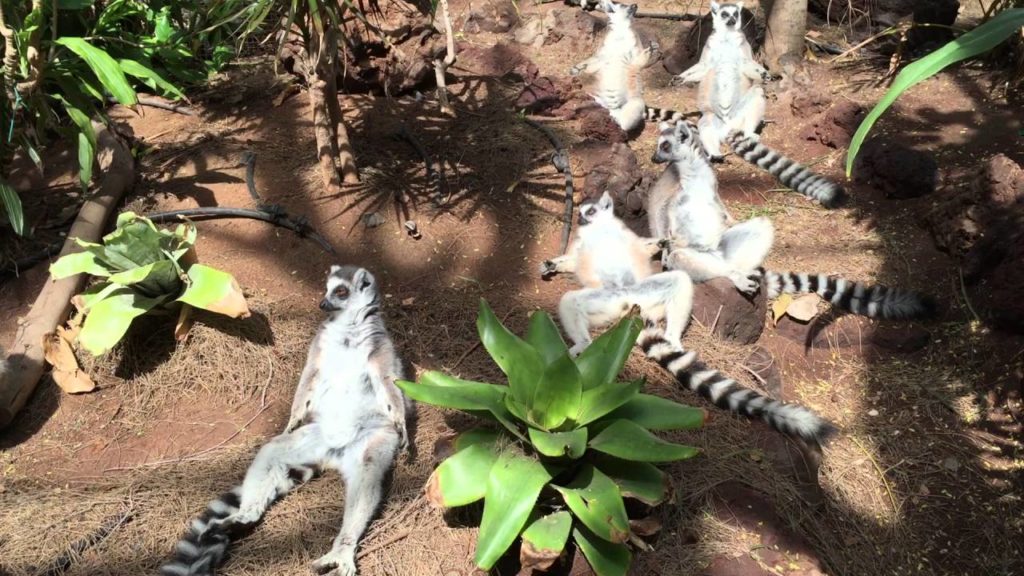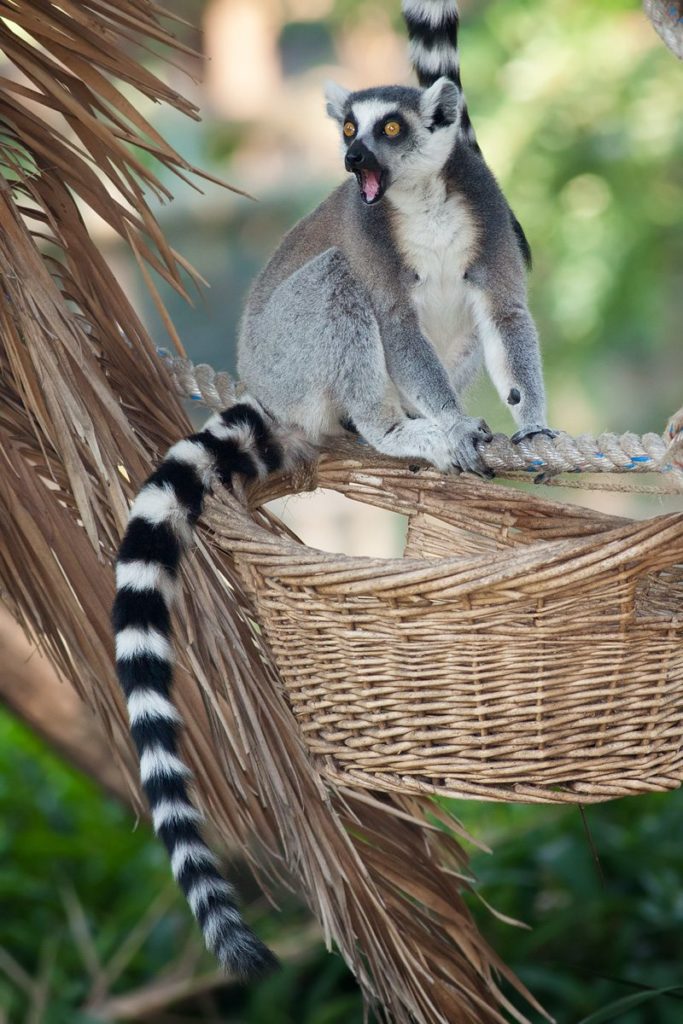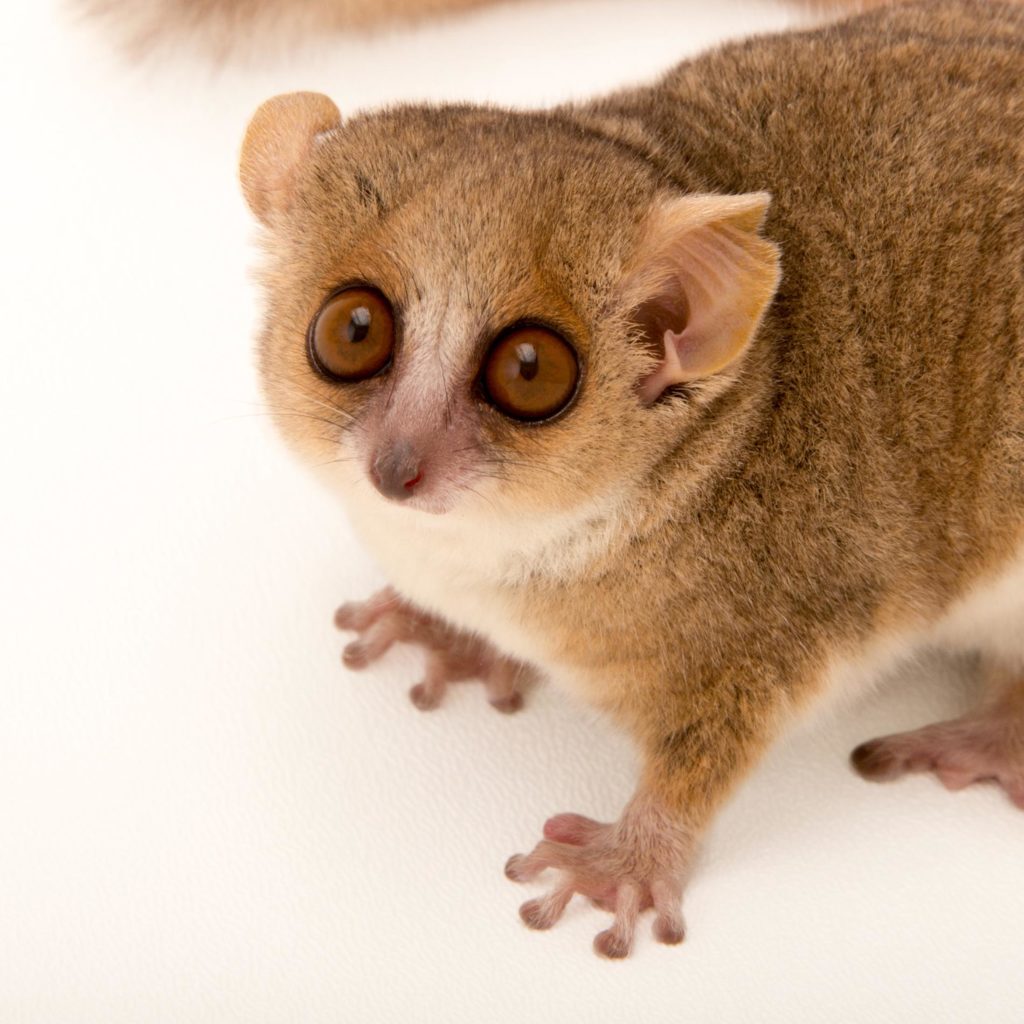Step into a spiny forest in Madagascar and you could easily believe that you’ve wandered onto the set of a movie about aliens. Trees like giant octopuses wave ferocious, spiky arms towards the blue sky. Others have enormous, bottle-shaped trunks and wrinkled bark covered in swirling patterns like graffiti. Unfamiliar birds bustle through the undergrowth and dig burrows underground. A glimpse of white fur flashes by, belonging to what seems to be a long-legged teddy bear that somehow stays unhurt as it leaps between the thorn-covered trees. The longer you spend here, the more wildlife wonders emerge – and the more you have to pinch yourself. Because this place is in fact real. It just happens to be arguably the most peculiar, least-known type of forest on the planet. Spiny forests stretch around the south-western edge of Madagascar, covering about 25,500km2.
This is an area slightly larger than Wales, though on this Indian Ocean island the climate is distinctly hotter and drier; daytime temperatures stay above 300C year-round and an average of 500mm of rain falls in a short, sharp wet season. The rest of the year it’s bone dry, yet a rich and varied ecosystem has sprung up. “It was all a big surprise when I got here,” says Charlie Gardner, a biologist and conservationist who has lived and worked in the spiny forests for 10 years. He was expecting a sun-baked, barren landscape but found the complete opposite. “It’s this fantastic world, teeming with life,” he says.

In their book Life Amongst the Thoms, Gardner and his wife, wildlife photographer Louise Jasper, describe the spiny forests as a “botanical wonderland”. Almost 95 per cent of the plant species are endemic – in fact unique not only to Madagascar but also this particular habitat -and many are unimaginably strange. “Because the spiny forests are so dry, everything living here has had to adapt to the aridity,” explains Gardner. “But they’ve all done it in such weird and wonderful ways.” As a result the World Wildlife Fund has placed these forests among its ‘Global 200′ – a list of the most outstanding areas of biodiversity on Earth.
SHARP PRACTICE
Spines are ubiquitous here. Growing spines is a key adaption to the extreme conditions; they collect moisture from the air in cool mornings, create shade during the day and protect plants from getting eaten. Among the prickliest plants are octopus trees, members of the Didiereaceae family related to New World cacti and South African ice plants, which sport dusters of tentacle-like branches reaching up to 10 m long. Many of the forests’ other plants store water in fleshy leaves and stems. Among the succulents there are diverse euphorbias: some are tall trees that resemble branching corals, others are bushes with branches like strings of sausages. Trees with swollen, bottle-shaped trunks are another frequent sight in the spiny forests, including no fewer than three of Madagascar’s six endemic baobab species. This adaptation for water storage, known as pachycauly, is also seen in elephant trees Pachypodium spp. with their distinctive trunks covered in silvery bark and spines.
“People often refer to the spiny forests as a ‘Dr Seuss’ landscape,” Gardner says. “I think that’s not far off the mark.” Overall, this unique ecosystem is home to more than 2,000 plant species that together create a complex habitat for a host of animals that live nowhere else. And none are more famous than the lemurs. Madagascar’s iconic ring-tailed lemurs occur here. At night their matriarchal troops huddle together in the thorny canopy, wrapped in their stripy tails. It can sometimes be chilly overnight, so when the sun rises they sit on their haunches in groups and expose their bellies, sunbathing to warm up. The other large local lemurs are Verreaux’s sifakas, the snow-white acrobats beloved of wildlife TV crews and tourists, which spring between octopus trees and descend to the sandy ground to cross gaps in the treetops, dancing sideways on two feet. But the spiny forests’ smaller, more secretive lemurs are far harder to spot. Mouse lemurs come out at night, scuttling through the trees, nibbling leaves, fruit and insects.

They are among the world’s smallest primates and from a distance do indeed look rather like their namesake rodents. The grey-brown mouse lemur lives only in this part of Madagascar and survives the annual droughts by sucking gum from trees. Many other lemurs stay entirely hidden throughout the dry season: you won’t see fat-tailed dwarf lemurs, for example, from May to November. The size of squirrels, they hibernate inside tree holes, surviving off fat reserves in their tails. You have a much better chance of encountering curious animals that look much like hedgehogs, shuffling around the forest floor at night. But – as with so many Malagasy animals – they aren’t what they seem. These charismatic spiky insect-eaters are tenrecs. They’re members of an ancient mammalian lineage that includes elephants, manatees and aardvarks.
SCALY SPECTACLES
As you might expect in such an arid environment, the spiny forests’ reptilian inhabitants are exceptionally diverse, ranging from snakes and chameleons to geckos and iguanas. About a third don’t live anywhere else. Two of them are tortoises – and both species face an uncertain future, though for different reasons. Radiated tortoises, which get their name from distinctive patterns on their shells, were traditionally a local delicacy eaten only at Easter and Christmas, but recently demand for their dried meat has soared in bars and eating establishments across the country. “Today the meat of these handsome reptiles is eaten year-round,” says Ryan Walker, a biologist researching the Critically Endangered species; his studies suggest that the total population has crashed from approximately 12 million in 2000 to 6 million in 2010. “It’s a sudden decline akin to rhino poaching or elephant ivory poaching in mainland Africa,” he says. Walker is now collaborating with Malagasy scientists to promote the conservation of radiated tortoises in local communities.
Spider tortoises, meanwhile, only live in a narrow coastal strip of spiny forest, and are also in bad shape – though not because people eat them. One of the world’s tiniest tortoises, with an average shell length of 11cm, they could fit in the palm of your hand. “The problem is that if you head more than about 10km inland, you simply can’t find them,” says Walker. “Having such a restricted range makes spider tortoises incredibly vulnerable to habitat change. As soon as you remove or degrade the unique spiny vegetation, these wonderful animals just disappear.” Despite its small range, the spider tortoise nonetheless has three distinct subspecies, all of which survive the dry season by burrowing at the base of spiny trees and shrubs, leaving the tops of their shells exposed. “They probably spend more time asleep than awake,” Walker adds.

Another local reptile, Labord’s chameleon, has evolved a more extreme coping strategy. Instead of falling asleep, it does something unique among all four-legged animals. “If s a beautiful chameleon with a Pinocchio-like nose,” says Charlie Gardner. “And ifs the world’s only tetrapod with an annual life-cycle.” After the baby chameleons hatch from eggs in November, they grow at up to 2.6mm a day, reaching maturity within two months. Then they mate, lay their eggs and expire. “By April they’re all dead,” Gardner says. “For the next eight months of the year the entire species exists only as eggs underground.” There aren’t as many different birds living here as in Madagascar’s other forests, particularly the dense, humid rainforests of the eastern coast, but there are io remarkable spiny forest specialists. Perhaps the oddest is the subdesert mesite, which resembles a miniature roadrunner. “They’re brilliant,” smiles Gardner.
For one thing, subdesert mesites have a highly complex social system, living in tightly knit groups in which members defend their territories by singing loud choruses at intruders, and everyone pitches in to help rear young. Scientists have long been puzzling over what type of bird mesites are. “At various times they’ve been placed with the doves, quails and cranes,” says Gardner. Recent genetic analysis, however, places mesites in their own order and confirms that they are a very old lineage. A different group of ancient birds is sadly now missing from the spiny forests. At up to 3m tall, and the biggest birds ever to evolve, elephant birds were related to kiwis and ostriches. They may have roamed much of Madagascar, but seem to have been most common in the south-west: beaches and sand dunes in the spiny forests are still littered with shell fragments from eggs the size of rugby balls. In 2011 these memorably took centre stage in the BBC documentary Attenborough and the Giant Egg.















1 thought on “Forest Mysteries: How Animals Really Live There”
I’ve seen videos of these lemurs in the cactus.
Gives a whole new meaning to ‘ putting a foot wrong ‘